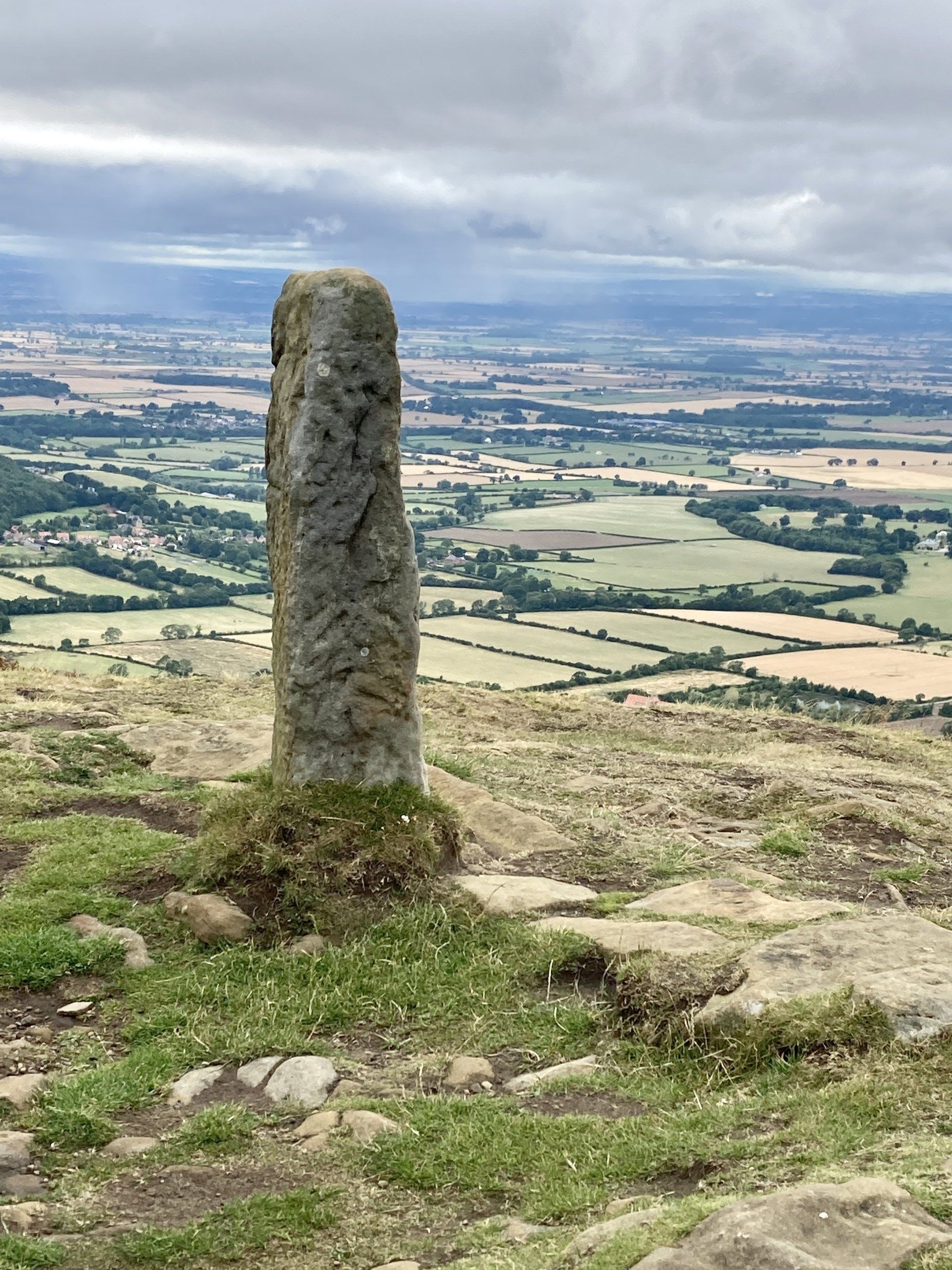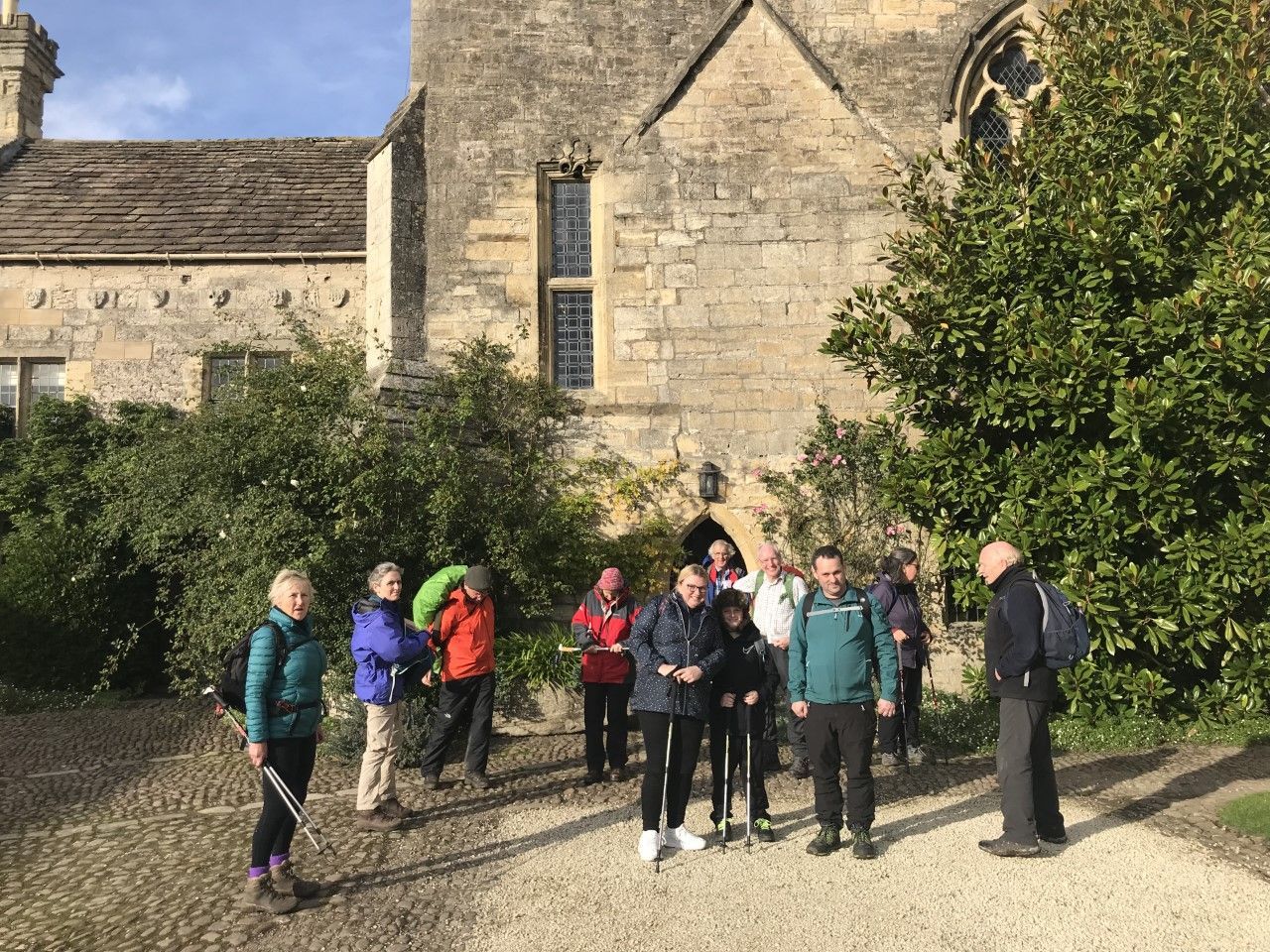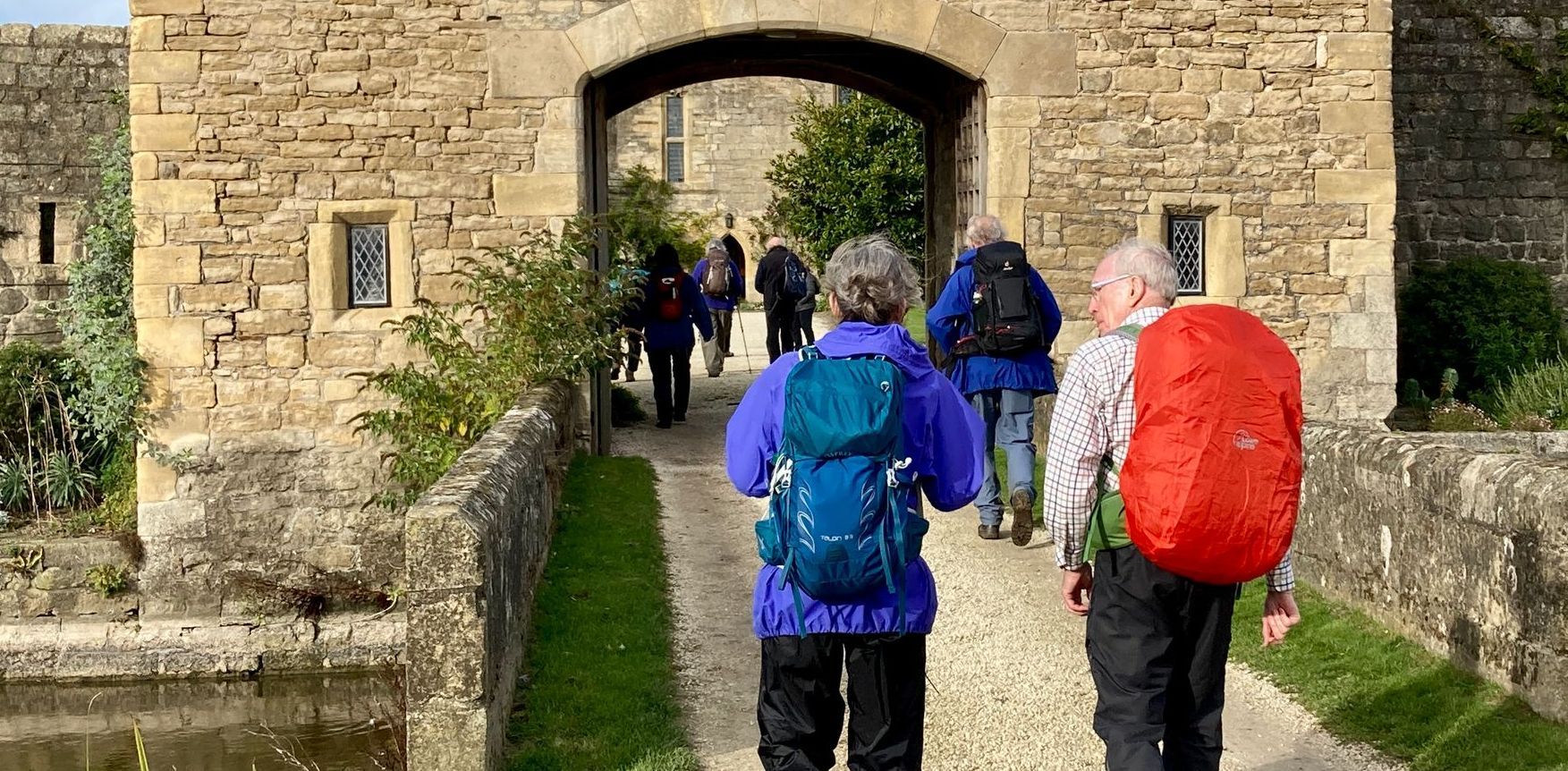HISTORY OF PILGRIMAGE
IN ENGLAND & WALES
Pilgrimage is an ancient practice. In this article Tim Guile reflects on its historical development.
Tim is a teacher, speaker and writer and Chair of the English Catholic History Association and an
Associate Fellow of the Royal Historical Society.

"Whan that aprill with his shoures soote
The droghte of march hath perced to the roote…
Thanne longen folk to goon on pilgrimages,
And palmeres for to seken straunge strondes,
To ferne halwes, kowthe in sondry londes;
And specially from every shires ende
Of engelond to caunterbury they wende,
The hooly blisful martir for to seke,
That hem hath holpen whan that they were seeke.”
Geoffrey Chaucer, Canterbury Tales, The Prologue (about 1388)
Holy places from long ago may still resonate with travellers, pilgrims and visitors to England and Wales today. Medieval English and Welsh people were strongly attached to veneration of the Blessed Virgin Mary and the saints and that they were known to go on pilgrimages both within the country and abroad. The tradition of the cult of the saints and pilgrimage to holy places is historically evidenced and was largely suppressed at the time of the Reformation in the sixteenth century. This tradition of pilgrimage has been revived in modern times and is now part of the rich tapestry of our history, archaeology, faith and heritage. Alongside those who would identify with the Christian community at large, lots of people have no religious beliefs at all and may indeed be antagonistic to organised religion. However, many of them may have an ambivalent attitude to places, people and events with connotations of religion, faith, spirituality or belief. They clearly ‘mean something’ and can engender enquiry or even fascination. The influence of the church may have waned substantially in Britain and other countries in western Europe but pilgrimage is still popular with growing numbers of people.

Pilgrimage is often associated with the Catholic tradition. “A pilgrimage is a journey that pilgrims make to a place that is considered holy. To us Catholics, a pilgrimage is more than just travelling to historic sites and viewing religious relics. It is a journey with a deeper and more spiritual meaning.”[1] The definition of a pilgrimage can be interpreted more widely than that. Pilgrimages do not have to be for just Christians, they are for anyone and everyone. A pilgrimage is a devotional practice consisting of a prolonged journey, often undertaken on foot or on horseback, toward a specific destination of significance. It is a short-term experience, removing the participant from his or her home environment and identity. The means or motivations in undertaking a pilgrimage might vary, but the act, however performed, blends the physical and the spiritual into a unified experience. [2]
A motivation for going on pilgrimage for some medieval people was to gain an indulgence from the Pope. An Indulgence, in Catholic theology, is the full or partial remission of punishment for sins. Therefore, the pilgrim was able to visit the shrine of a local or faraway saint to gain the sanctioned indulgence, but some visited for another reason altogether, the hope of healing for a personal malady or for the health of a loved one.

This practice has had a huge influence not only on the spiritual history of the British Isles but on the physical infrastructure as well. Routes have been laid down by the feet of the faithful, glorious buildings made possible by the donations of those who visit the place where relics lay in state, and a network of abbeys built to support the needs of those travellers. Everywhere one looks in our towns and cities we see buildings connected in some way with the pilgrimage story of our ancestors. The final fall of Jerusalem in 1453 meant that European sites such as Rome and Santiago de Compostela in Spain became the main goal of those wishing to make a lengthy pilgrimage. Pilgrims began visiting the shrine of St James from the tenth century, the first recorded English pilgrims arrived in the late eleventh century and by the twelfth century was highly organised. During the Middle Ages, people made pilgrimages for a variety of reasons. Many holy sites were believed to have a healing powers, such as holy wells or the shrine at Walsingham, in Norfolk. Pilgrims who had a sick loved one could seek divine help at a place like this, along with people who were ill themselves, and people who had recovered from illnesses could also come to give thanks to God. Penitents would also undertake pilgrimages to gain forgiveness for their sins, or to shorten time in purgatory for themselves or for others. Basically, as a pilgrimage was a journey of faith, anything a person felt they needed God’s help for could be motivation for the journey. Pilgrimages could be long or short. Many medieval English or Welsh pilgrims made short journeys on foot or horse back to local shrines just a few miles away. Many could not afford much time away from the fields or their trade. People made pilgrimages for a variety of reasons. Personal motivations for pilgrimage amongst the laity were as varied as the individual pilgrims themselves but can be broadly placed within two categories; the wish to implore divine aid at a shrine on behalf of oneself or a relative, and the opportunity pilgrimage offered in terms of travel and temporary escape from the daily drudgery of everyday life. It can be argued that for the second motivation it appears it might have been an excuse to shirk responsibility and duty by a variety of social classes, trades and professions, from the poorest serfs and peasants to wealthy tradesmen and monks and nuns. For this very reason a pilgrim was expected to have permission from his Bishop or superior before setting out and had to put his affairs in order, often making a will, repaying outstanding debts and providing for his family in his or her absence.
Such was the popularity of pilgrimage in the late Middle Ages, there were so many people wanting to make pilgrimages to various places that the Church had to regulate the practice, so that families and work were not neglected. Pilgrims may have assembled in their parish church dressed in the distinctive pilgrim habit and be blessed by the priest. Many pilgrims may have typically worn a long grey gown with a cowl and a broad hat, and carried a staff, a scrip or satchel and a bottle. Pilgrims travelled to religious sites all over England and routes were well established to help them on their journey. Shrines were part of the pilgrimage and pilgrims may have journeyed from one shrine to another on the way. Routes were generally marked by religious houses, wayside chapels and stone crosses to aid the pilgrims with their spiritual and temporal needs. Monasteries and hospices also offered hospitality. Travelling was very hazardous with miles of open or forested countryside, poor tracks, outlaws and wild animals such as wolves and boar, so pilgrims were encouraged to travel in groups. They might assemble, like Chaucer’s pilgrims in the Canterbury Tales, at inns such as the famous Tabbard in Southwark. In their case it was to travel as a group on horseback, to the shrine of St Thomas of Canterbury. They competed for a prize of a meal at a hostelry on their return for the best tale by each telling two stories on the way and the same on the return journey.

By far the most famous medieval shrine of Our Lady was Walsingham in Norfolk. Erasmus, the Dutch scholar, visited Walsingham in 1513 and was impressed by the splendor of the Shrine. The main route to Walsingham was from London via towns and religious sites. Pilgrims often visited several shrines en route to a principal shrine. Pilgrimages to Walsingham might include Bromholm Priory to see a relic of the Holy Cross, a visit to the anchorite Mother Julian in Norwich or St William’s shrine in Norwich Cathedral, St Edmund’s Shrine at Bury St. Edmunds in Suffolk, or St Etheldreda’s shrine in Ely Cathedral. Walsingham the site where a noblewoman Richeldis received a vision telling her to build a replica of the house of the Nativity rapidly became popular, aided by the establishment of an Augustinian priory there in 1153 and several visits from monarchs. Even Henry VIII travelled to Walsingham as a pilgrim.
The shrine of Thomas Becket. Archbishop of Canterbury, murdered by Henry II in 1170 rapidly became a site of pilgrimage, with even Henry II himself bowing to the inevitable and making a penitential journey there himself. The most prominent pilgrimage destinations in late medieval England were the shrines of the saints at Canterbury, St Thomas the Martyr, Durham, St Cuthbert, Ely, St Etheldreda, Walsingham, Our Lady of Walsingham, Rochester, St William of Perth, Winchester, St Swithun, Worcester, St Wulfstan and St Oswald and St David at St Davids. All these holy places boasted impressive shrines dedicated to their respective patron saints. Other important shrines in the Middle Ages included Holywell in north Wales, Holy Island also known as Lindisfarne, Glastonbury and St. Albans. These shrines, along with lesser home-grown saints, became very popular and as pilgrimage became part of English religious practice, the country was crossed and recrossed with pilgrimage routes, encouraging trade and a growing range of businesses dedicated to the needs of pilgrims. During the ‘golden years’ of pilgrimage, from the early eleventh to the early sixteenth century, it has been estimated that up to one fifth of the population of England had connections in some way with pilgrimage, either as pilgrims themselves or maintaining its infrastructure. Elaborate tables of penance were drawn up during the fourteenth century to illustrate which sites gained most time off from purgatory for each offence committed.

The monks channelled the pilgrims through defined routes around the church before arriving at the actual shrine they had come to see. When the pilgrims arrived at the shrine, they would pay money to be allowed to look at these holy relics. In some cases, pilgrims were even allowed to touch and kiss them. The keeper of the shrine would also give the pilgrim a metal badge that had been stamped with the symbol of the shrine. These badges were then fixed to the pilgrim's hat so that people would know they had visited the shrine. Those who bought official souvenirs at the shrine were often allowed to get close to it and place the souvenir on the shrine to give it a power they could return home with. Monks, nuns and clergy may themselves have travelled to churches and monasteries for a variety of reasons, often with a desire to pray at shrines of particular saints of either national or local renown. Another motivation for pilgrimage among the clergy and religious may have been less spiritual and more mundane such as administrative business, diplomacy or to convey letters and documents to another institution on behalf of their superiors.
At the start of the sixteenth century, pilgrimages were part of the traditional faith of England and central to everyone’s lives. This was an experience which was extremely common in the medieval period right up to the reign of Henry VIII, after which it was strongly discouraged by Royal Injunctions and the new regulations brought about by the religious reformers who had the king’s ear at that time.

Pilgrimage continued at Holywell in North Wales throughout this period of religious turmoil but in the twentieth century pilgrimage began to reappear for example at Walsingham. The Walsingham pilgrimage revival began in the late nineteenth century, with the first modern pilgrimage taking place on 20th August 1897 with the visit of the Catholic Guild of Our Lady of Ransom to the Slipper Chapel, a mile outside the village in Houghton St Giles. Visits to the Slipper Chapel became more frequent, and as the years passed devotion and the number of pilgrimages increased. In 1921 Anglican priest, Fr Alfred Hope Patten was appointed vicar of Walsingham. He was determined to re-establish Walsingham as a shrine to Our Lady and set up a statue of her in the parish church of St Mary. By the early 1930s, Fr Patten had built a new Anglican shrine containing a modern Holy House, just outside the Priory walls. Today, Walsingham is one of the most significant spiritual places in the country, visited each year by around 350,000 pilgrims of all ages and backgrounds. On 19th August 1934, Cardinal Bourne and Bishop Lawrence Youens led the Catholic Bishops of England and Wales, together with ten thousand pilgrims to the Slipper Chapel. At this pilgrimage, the Slipper Chapel was declared to be the National Shrine of Our Lady for Catholics in England. In 1948 Student Cross began a tradition that continues today. Each year Pilgrim Cross as its now known, still walk to the Shrine during Holy Week.
In the twenty-first century, pilgrimage has made a resurgence. New pilgrim trails are appearing across the country. Camino of Ireland and Wales, Penrhys Pilgrimage Way, Walsingham Way, Finchale Camino Ingles, The Old Way from Southampton to Canterbury, St Hilda’s Way. Saints Way in Cornwall, North Wales Pilgrims Way (Camino Cymru) are just a few examples.
You are never truly alone on a pilgrim way. Even on remote stretches of trail when you don’t see another soul, there’s always the sense that so many others have walked the same route before you, sometimes for hundreds of years. On popular pilgrim route you may be travelling in a group where you can laugh, sing and get to know fellow pilgrims. Everyone has their own unique experience of a pilgrim walk. The beauty of walking, and of walking an established route like a pilgrim way, is that it gives you the time and space away from the demands of daily life to reconnect with the world around you. Travelling on foot is one of the best ways to absorb the sights, sounds, and smells of the places you pass. Whether it’s the sweet scent of the wildflowers or the lingering smell of the cowpat you didn’t quite manage to avoid, you’ll feel more in touch with the natural world than perhaps you ever have. When all you have to do that day is to put one foot in front of the other, you’ll also find that the rhythm of walking calms your mind and aids reflection and so it becomes a spiritual experience in itself. No matter how long or short your chosen pilgrimage walk is, there’s always a fantastic sense of achievement on reaching your goal and the end of your journey. Why not try it for yourself?
Bibliography
Alton, D, Pilgrim Ways, Catholic Pilgrimage sites in Britain and Ireland, St Pauls, London, 2001
Bull, A, Pilgrim Pathways, 1-2 Day Walks on Britain’s Ancient Sacred Ways, Trailblazer Guides, Hindhead, 2020
Guile T J, Ipswich, Willesden and Walsingham, Three Marian Shrines in Sixteenth Century England, ECHA Newsletter, No 87/ 88 September 2020
Guile, TJ, A Holy and Devout Virgin Queen, St Æthelthryth (Etheldreda) of Ely, ECHA Newsletter No 93, January 2022
Guile TJ, The Beauty of Welsh Holy Places and the Lure of Modern Pilgrimage, ECHA Newsletter No 96, January 2023
Rosewell, R, Saints, Shrines and Pilgrimages, Shire Books, Oxford, 2017
Sumption, J. Pilgrimage: An Image of Mediaeval Religion, Faber and Faber, London, 1975
Vail A, Shrines of Our Lady in England, Gracewing, Leominster, 2004
D. Webb, Pilgrimage in Medieval England, Hambledon and London, London, 1998
Websites
https://issuu.com/dirkjan2/docs/desiderius_erasmus_-_pilgrimages_to_4144b0cdb8d5c8
https://digital.kenyon.edu/cgi/viewcontent.cgi?referer=https://www.google.com/&httpsredir=1&article=1179&context=perejournal
[1] https://www.catholicfaithstore.com/daily-bread/real-meaning-pilgrimage-catholics/
[2] Guile, TJ, Ipswich, Willesden and Walsingham, Three Marian Shrines in Sixteenth Century England


